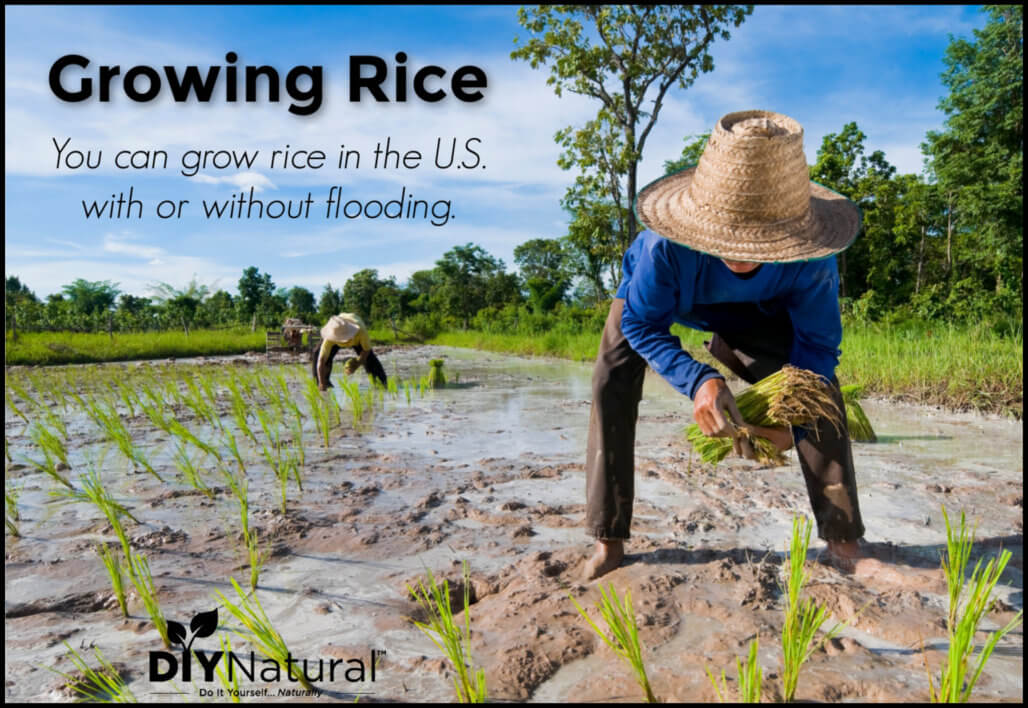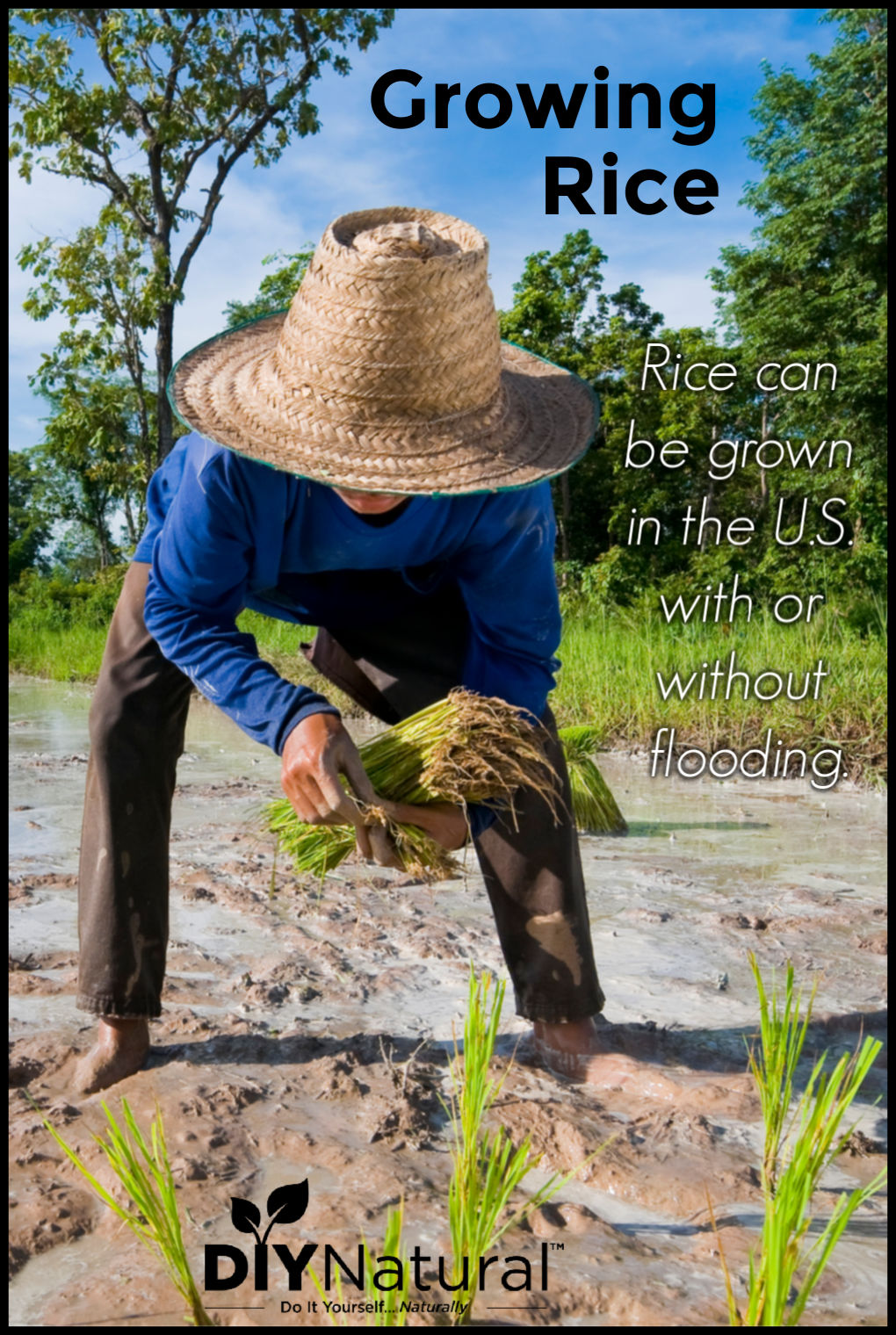
When you think of growing rice the U.S. isn’t the first place you think of. But you can grow rice here and you don’t have to flood the fields to do it.
I have some friends at the tailgate market that I go to. They are from Laos and grow all sorts of fun Asian fruits and vegetables. They also grow rice, in the mountains of Western North Carolina!
Growing Rice in the Mountains
I live in the Western North Carolina Appalachian mountains. Marion, North Carolina is at about 1,400 feet above sea level and sits at the base of the Blue Ridge Mountains. So how does growing rice work here? You may not know that most varieties of rice can and will grow whereever you plant them.
Rice plants prefer a soil pH of 6.0 to 7.0, slightly more acidic. The soil here runs from 5.5 to 6.5, making it perfect for growing rice. Around here we grow upland rice, those types of rice that don’t require flooding.
Does It Require Flooding?
However, flooding isn’t a requirement for growing rice, it is merely a means of controlling weeds. Rice plants are heavy nutrient eaters, making them tough competition for weeds. Also, rice plants will tolerate wet conditions whereas most weeds will not. So flooding the fields provides rice delivers excellent weed prevention.
Finally, you can grow rice in areas that are hard to flood, you just have to control the weeds manually.
Growing Rice Most Anywhere
So this means if you have slightly acidic soil and can control the weeds, you can grow rice.
Rice plants take four to five months to mature, so here we plant in mid-April to enjoy a mid-September harvest. In northern areas like Minnesota, where I’m from, it can freeze in April and early May, so you would need to cover it in the event of frost. In Florida, quite the opposite, you would want to plant in October or November for a March or April harvest. Depending on the soil conditions, you may need to amend the growing area. Minnesota can vary, but Florida is mostly alkaline. Raised beds or soil that has a lot of organic matter added to it would be the best. To succeed, rice needs a minimum of six hours of sunlight per day.
How to Grow Rice
Look at this as a CliffNotes® version of growing rice.
Gettings Seeds
Buy your rice seeds. Don’t use rice from the grocery store, it has been processed and won’t grow.
Find seeds here:
Preparing Your Garden Bed
This is one thing you can do now, in the fall. Add organic matter to the soil and till it under. Or plant a cover crop like Fava beans or crimson clover. Both are nitrogen fixers, helping to hold nitrogen in the soil and both add organic matter to the soil, lowering the pH, which is essential for growing rice.
Soak Rice Seeds Before Planting
When you are ready to plant the rice, first soak it in water for 12 hours or so. This hydrates the seeds and gives them a head start.
Planting Rice Seeds
Plant your rice about an inch and a half below the surface and about six inches apart. Planting in rows make weed removal easier, but it’s not necessary. Cover the rice seeds lightly and water well.
Water Well and Often
Growing rice means watering well, especially when it’s getting started. While the rice is becoming established, water well and often. After the plants are about a foot tall, you won’t need to water as much.
At about 3 months, you’ll see the rice heads begin to swell. You’ll need to check them to see if they are ripe. They will act much like milky oats, soft, but firm. You should be able to squish them a bit but feel some resistance.
Harvesting Rice
To harvest, pull on the seeds while leaving the center stalk. It’s easiest to strip them into a bucket. Be prepared, as you can get as much as 5,000 pounds of rice per acre! Really!
Winnowing Rice
Once the rice is harvested, it must be winnowed to get rid of the chaff or hulls. Take a flat basket and toss it up in the air outside. The wind will carry the chaff away. Do this 20-30 times.
Storing Rice
When the rice is cleaned, it must be dried or refrigerated or frozen. I didn’t know this at first and lost a few pounds of fresh rice to mold. Fresh rice is nothing like you would get int the store.
My Friends Rice Farm
My friends, Tou and Chue Lee, grow five types of rice on their One Fortune Farm in Marion, NC. They have purple (my favorite), gold, brown, red, and white rice. Each of their five varieties can all be grown and used the same way. One of my favorite ways to use homegrown rice is bamboo steamed rice. Chou takes some purple rice and pours it into a hollow tube of bamboo. About half full, she says, then cover it with coconut milk. Cover with wax paper and a rubber band and stand upright in a steamer. Steam until the rice is done. There is probably more to this recipe. I’ll be trying it myself in a few weeks. This Friday marks the first rice harvest in our area and I can’t wait!
Closing Thoughts
I suppose growing rice is a lot like growing popcorn. You don’t have to do it but you can if you want to! At the end of the day growing your own food means you know exactly what it’s made of, and that’s never a bad thing.
Have you grown rice or thought about growing rice? Tell us about your experiences!
*******



